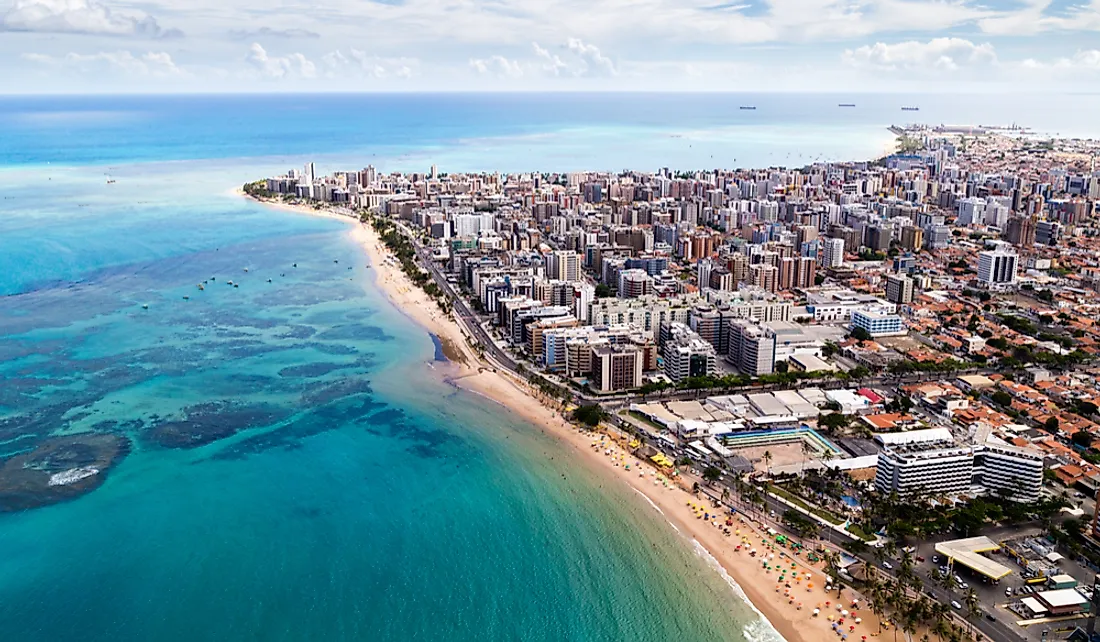What Is The Capital Of The Alagoas State Of Brazil?

Alagoas, which is found in the country's northeastern region, is one of the 26 states of Brazil. The state borders three other states which include Bahia, Sergipe, and Pernambuco. It also has a coastline along the Atlantic Ocean. The state of Alagoas has a surface area of 10,721 square miles making it the third-smallest state in the country behind the state of Sergipe and the Distrito Federal. It is divided into 102 municipalities. The state of Alagoas is the country's leading producer of coconuts and sugarcane, and its economy is largely reliant on keeping cattle. It is one of the country's poorest states and one of the most dangerous Brazilian states. The state capital is Maceió.
Maceió
Maceió is the state capital of Alagoas, and it is the biggest city in the state as well. The name of the city is derived from the indigenous languages which means "a spring". Several springs flow towards the sea; however, some form small lakes or what is known as "lagoas" in the Portuguese language. In Brazil, there are many springs and lakes (maceió and lagoas), and that is the reason why the state was named Alagoas and the city Maceió. The newly constructed international airport of Zumbi dos Palmares links the city of Maceió to other major cities around Brazil as well as flights outside of Brazil. Likewise, the Federal University of Alagoas is located within the city of Maceió.
History of Maceió
The city of Maceió is a port city and traces its roots to the early 19th century when a sugar mill together with the plantation complex was established in the present day city. It developed quickly as a result of Jaraguá Bay, where ships came to collect wood. Following the construction of a sugar mill, the city of Maceió began exporting sugar, and it was followed immediately with the export of other commodities such as coconut, tobacco, spices, and leather. The increasing trade around the area led to the increase of population and on December 9th, 1839, Maceió was made the state capital of Alagoas.
Geography of Maceió
Maceió City lies between the Atlantic Ocean and Mundau Lagoon, and 2006 the city had a population of about 922,458 people, while the metropolitan area of the city had a population of around 1,156,287 people. The city experiences a tropical climate with temperatures averaging about 77 degrees Fahrenheit. Temperatures are typically high all through the year. January is usually the hottest month, and the highest temperatures could reach as high as 89.6 degrees Fahrenheit, while the minimum could average about 72 degrees Fahrenheit. The coolest month is usually July when the highest temperatures average about 81 degrees Fahrenheit while the lowest is about 63 degrees Fahrenheit.
Economy of Maceió
In 2008, the city of Maceió hand at GDP of $2.3 billion or 9.14 billion Brazilian real while the GDP per capita income was $2,502 or 9,894 Brazilian real. One of the largest industries in the city is the chemical product industry particularly brine which is extracted in several wells outside the city of Maceió. Ethanol and sugar is also a major sector which is extracted from the sugarcane cultivated in a region. Tourism has also played a significant role in transforming the coastal regions of the city, and numerous entertainment centers have been established along with the coastal areas which cater to both the Brazilian tourists and foreign tourists. Most tourist visiting the city come mainly from other South American countries as well as the United States, Italy, France, and Germany.











